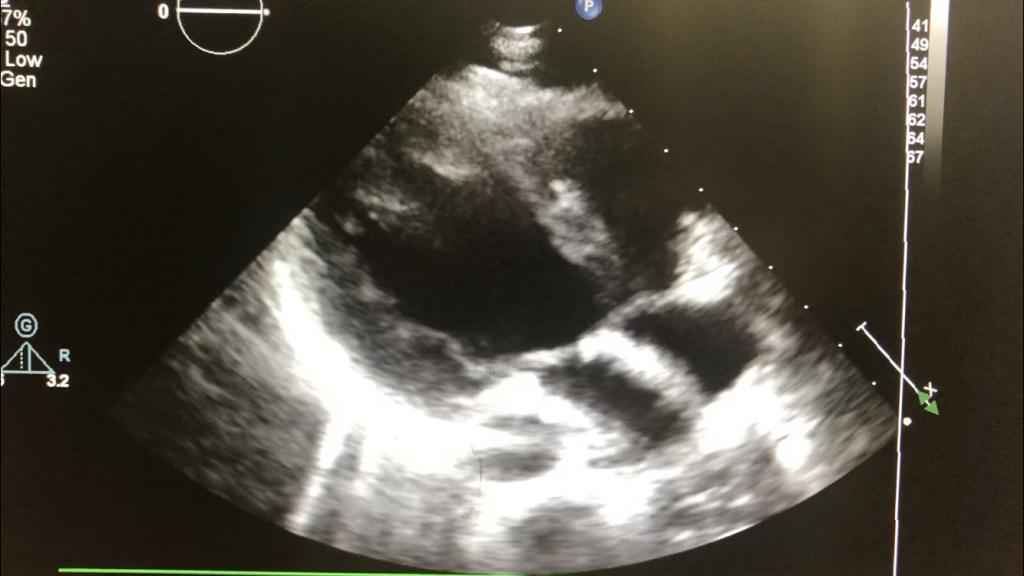This is an echocardiogram performed on a newborn male with prenatally-diagnosed hypoplastic left heart syndrome (HLHS). After being born at Loma Linda, the patient was admitted to the NICU. He was treated with prostaglandin E1 and nasal intermittent positive pressure ventilation (NIPPV). He then underwent a Norwood procedure.
This is an apical four-chamber view showing the ventricles in the near field and the atria in the far field. The left side of the heart appears on the right side of the screen due to the indicator placement and mode selection. That is, in the apical four-chamber view, the indicator on the probe points toward the patient’s left side. Since cardiac mode was selected, the indicator on the screen is directed toward the right (take a look at the P in a blue circle on the screen). This means that whatever is on the patient’s left appears on the right side of the screen, because the indicator on the probe correlates with the indicator on the screen! Therefore, we can see that the left ventricle (LV) is much smaller than the right ventricle (RV), which occupies the cardiac apex. Without a proper understanding of indicator orientation and mode selection, one might wrongly conclude that this is a normal heart!
HLHS is a rare heart defect where the left side of the heart is underdeveloped and cannot provide effective circulation to the body. For babies born with HLHS to survive, the ductus arteriosus, which normally closes shortly after birth, needs to remain open so that blood can pass from the baby’s heart to the body. To keep the vessel from closing, patients are treated with a medication called prostaglandin E1. Babies with HLHS also need to have a hole between the upper chambers of the heart (i.e. atrial septal defect) to allow oxygen-rich blood to pass into the heart so it can be pumped to the rest of the body. Babies with HLHS also have an underdeveloped mitral valve and aortic valve, resulting in a small left ventricle, which cannot provide blood to the body.
Danielle Hamilton, MS2 and Caitlin Borkowski, Pediatric Emergency Medicine Fellow
Sources:
Gobergs, Roberts et al. “Hypoplastic left heart syndrome: a review.” Acta medica Lituanica vol. 23,2 (2016): 86-98. doi:10.6001/actamedica.v23i2.3325
“Hypoplastic Left Heart Syndrome (HLHS).” The Society for Cardiovascular Angiography and Interventions, 18 May 2015, www.secondscount.org/pediatric-center/pediatric-detail?cid=deb41464-18f7-4c64-bd10-9308e5b18317#.XUngnPkrK9I.
